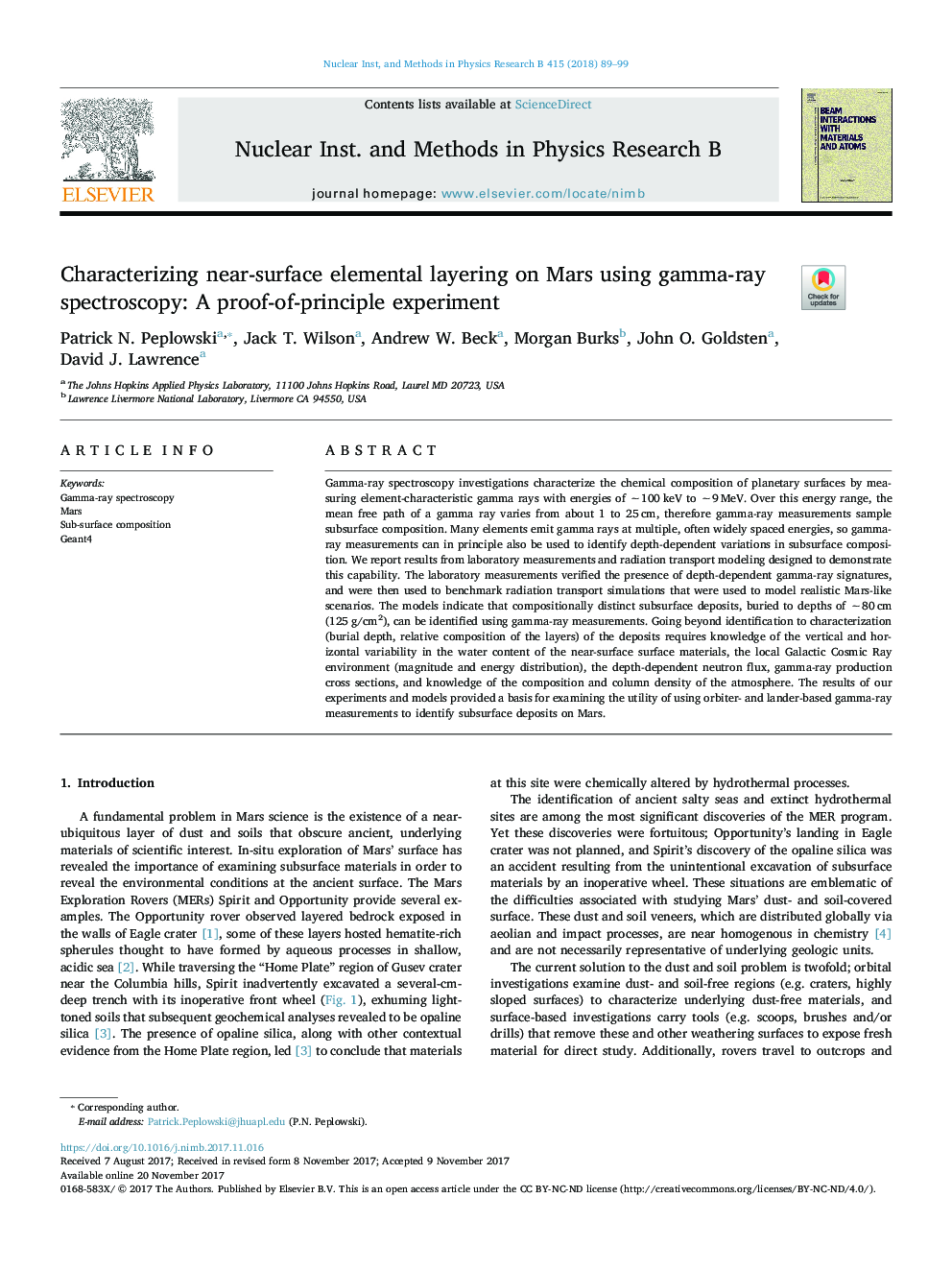| Article ID | Journal | Published Year | Pages | File Type |
|---|---|---|---|---|
| 8039465 | Nuclear Instruments and Methods in Physics Research Section B: Beam Interactions with Materials and Atoms | 2018 | 11 Pages |
Abstract
Gamma-ray spectroscopy investigations characterize the chemical composition of planetary surfaces by measuring element-characteristic gamma rays with energies of â¼100â¯keV to â¼9â¯MeV. Over this energy range, the mean free path of a gamma ray varies from about 1 to 25â¯cm, therefore gamma-ray measurements sample subsurface composition. Many elements emit gamma rays at multiple, often widely spaced energies, so gamma-ray measurements can in principle also be used to identify depth-dependent variations in subsurface composition. We report results from laboratory measurements and radiation transport modeling designed to demonstrate this capability. The laboratory measurements verified the presence of depth-dependent gamma-ray signatures, and were then used to benchmark radiation transport simulations that were used to model realistic Mars-like scenarios. The models indicate that compositionally distinct subsurface deposits, buried to depths of â¼80â¯cm (125â¯g/cm2), can be identified using gamma-ray measurements. Going beyond identification to characterization (burial depth, relative composition of the layers) of the deposits requires knowledge of the vertical and horizontal variability in the water content of the near-surface surface materials, the local Galactic Cosmic Ray environment (magnitude and energy distribution), the depth-dependent neutron flux, gamma-ray production cross sections, and knowledge of the composition and column density of the atmosphere. The results of our experiments and models provided a basis for examining the utility of using orbiter- and lander-based gamma-ray measurements to identify subsurface deposits on Mars.
Keywords
Related Topics
Physical Sciences and Engineering
Materials Science
Surfaces, Coatings and Films
Authors
Patrick N. Peplowski, Jack T. Wilson, Andrew W. Beck, Morgan Burks, John O. Goldsten, David J. Lawrence,
